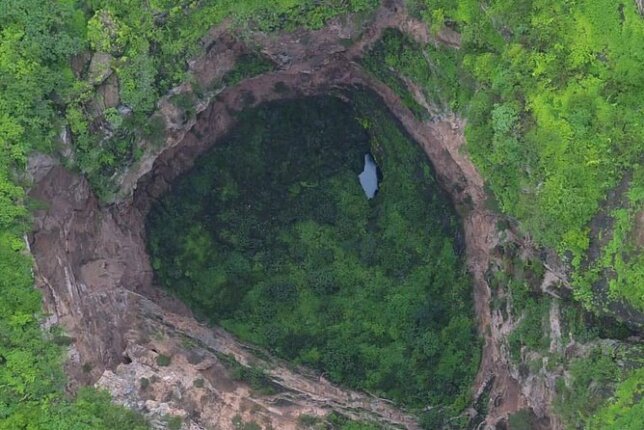Hidden in the misty mountains of southern Oman, vast sinkholes plunge deep into the earth, carrying with them a mix of natural wonder, ancient legends, and a touch of danger.
Among them is the colossal Kahf Teiq — one of the largest sinkholes in the world — stretching 211 metres deep and 150 metres wide. Nearby, the Tawi Atair sinkhole, known locally as the “Well of Birds,” offers visitors concrete paths and stairways to explore, with the air filled by the echoing calls of birds that inspired its name.
But not all of Dhofar’s sinkholes are tourist-friendly. The Sheeheet pit, a 40-minute drive along winding mountain roads, is surrounded by slippery mud, prompting authorities to install fences and warning signs. During a recent AFP visit, one tourist lost their footing and slid dangerously close to the edge. Dhofar’s governor, Marwan bin Turki Al-Said, has assured visitors that safety remains a top priority.
Tawi Atair remained unknown to the outside world until 1997, when Slovenian researchers, working with Sultan Qaboos University, documented it for the first time internationally. Since then, Dhofar’s sinkholes have become a magnet for travellers — especially during the scorching Gulf summers when the region’s cooler climate offers relief.
While local folklore attributes the giant craters to meteorite strikes, geologists like Ali Faraj Al-Kathiri explain they formed over thousands of years as acidic water slowly dissolved the limestone beneath.
Today, Oman welcomes nearly four million visitors a year, with the government aiming to triple that number by 2040 through sustainable tourism — and these awe-inspiring sinkholes are playing a starring role.




